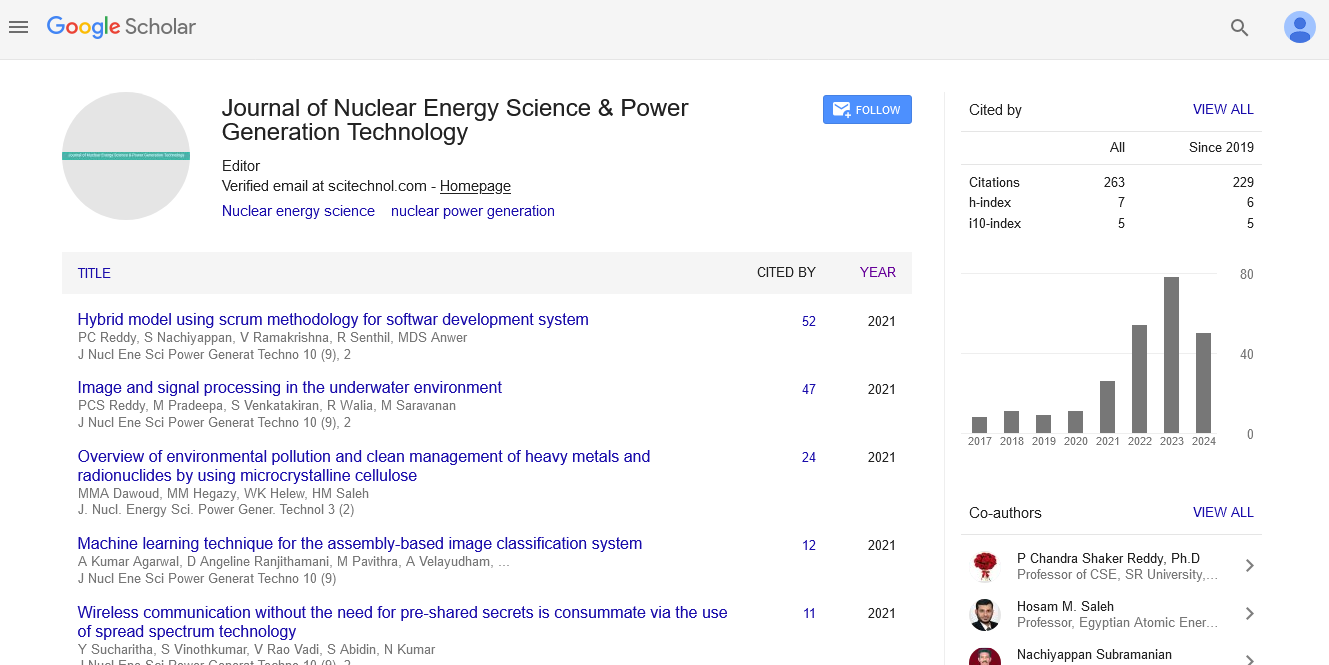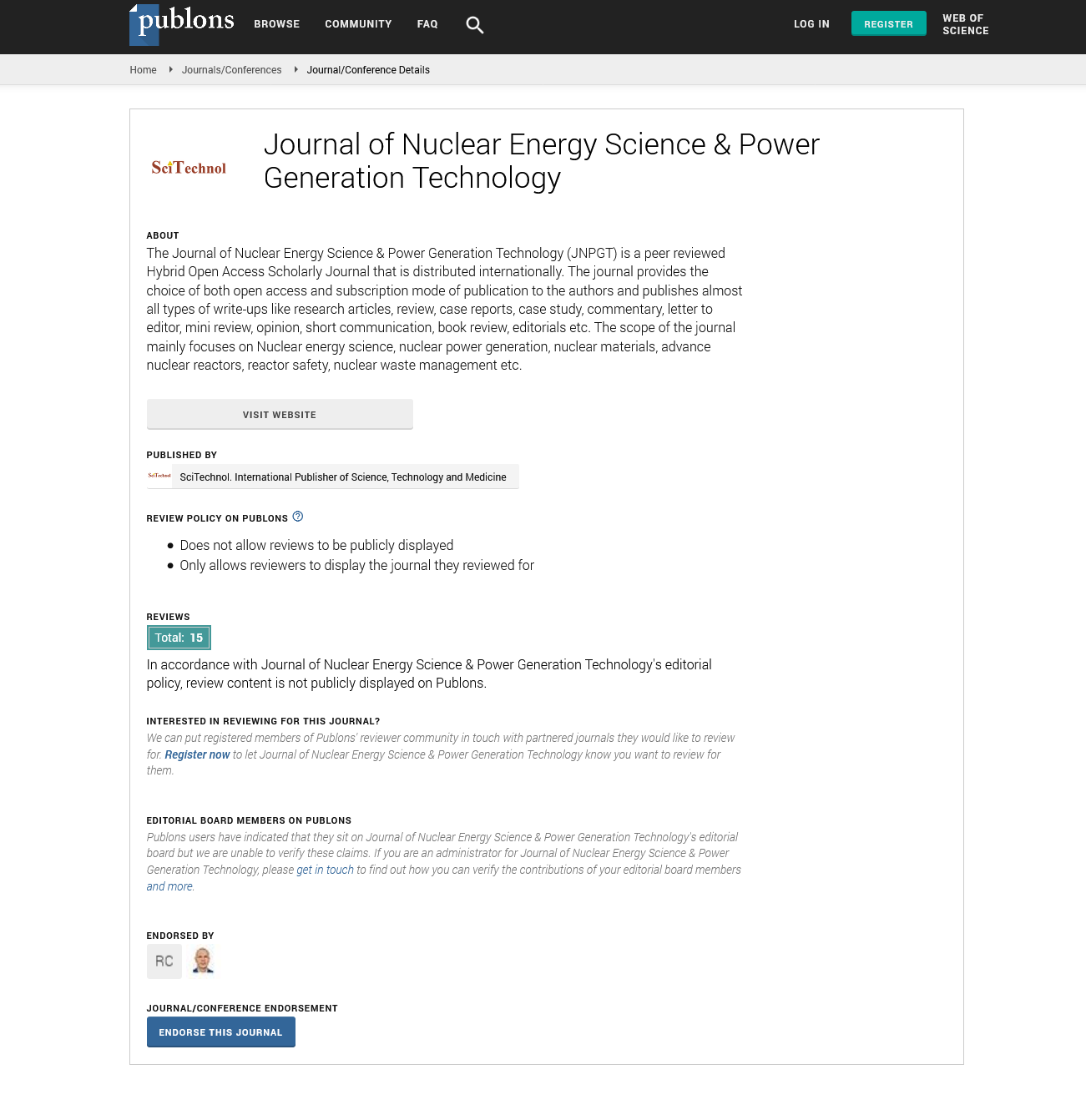Correlation between physicochemical properties and blending time for sepiolite and halloysite inside Nafion matrix of proton exchange membrane (PEM) used in fuel cell
Sahng Hyuck Woo, Arnaud Rigacci and Christian Beauger
MINES ParisTech, France
: J Nucl Ene Sci Power Generat Technol
Abstract
Nafion is selected as a standard material in proton exchange membrane fuel cell (PEMFC) application to prepare perfluorosulfonic acid (PFSA) membranes due to its physicochemical properties such as chemical stability, good mechanical stability, and proton conductivity. However, Nafion membrane shows reduced properties above 80°C and at low relative humidity. Hence, sepiolite nanofiber (SEP) and halloysite nanotubes (HNT) are proposed to be used as a nanoclay filler within membrane to overcome such limitations. This study introduces the relationship between physicochemical properties and blending time for SEP and HNT inside Nafion matrix. The blending time impacts the homogeneity of the composite which is directly related with the performance. The homogeneity was checked through chemical analysis of silicon (Si) and fluorine (F) contents across the membrane (see Figs. 2 and 3). The shorter the blending time, the better the homogeneity. In the study, water uptake and thickness swelling of composite membranes displayed improved values compared with those of pristine Nafion membrane. Whatever the composite, as a general rule, the shorter the blending time the better the performance. This indicates that Nafion/SEP and Nafion/HNT dispersions blending for short time can surprisingly form more homogenous composite membranes resulting in decreased swelling.
Recent Publications
1. Yang H N, Lee W H, Choi B S and Kim W J (2016) Preparation of Nafion/Pt-containing TiO2/graphene oxide composite membranes for self-humidifying proton exchange membrane fuel cell. Journal of Membrane Science 504:20–28.
2. Liu X, He S, Song G, Jia H, Shi Z, et al. (2016) Proton conductivity improvement of sulfonated poly (ether ether ketone) nanocomposite membranes with sulfonated halloysite nanotubes prepared via dopamine-initiated atom transfer radical polymerization. Journal of Membrane Science 504:20–219.
3. Zhang H, Ma C, Wang J, Wang X, Bai H, et al. (2014). Enhancement of proton conductivity of polymer electrolyte membrane enabled by sulfonated nanotubes. International Journal of Hydrogen Energy 39(2): 974–986.
4. Beauger C, Lainé G, Burr A, Taguet A, Otazaghine B, et al. (2013) Nafion®–sepiolite composite membranes for improved proton exchange membrane fuel cell performance. Journal of Membrane Science 430:167–179.
5. Zhang H, Zhang T, Wang J, Pei F, He Y, et al. (2013) Enhanced proton conductivity of sulfonated poly (ether ether ketone) membrane embedded by dopamineâ€Âmodified nanotubes for proton exchange membrane fuel cell. Fuel Cells 13(6):1155– 1165.
Biography
Sahng Hyuck Woo is a PhD candidate at the MINES ParisTech and his research interests are materials for composite membranes, MEA (membrane electrode assembly), fuel cells, antifouling property, micro and ultrafiltration, desalination (reverse osmosis).
E-mail: sahng-hyuck.woo@mines-paristech.fr
 Spanish
Spanish  Chinese
Chinese  Russian
Russian  German
German  French
French  Japanese
Japanese  Portuguese
Portuguese  Hindi
Hindi 

